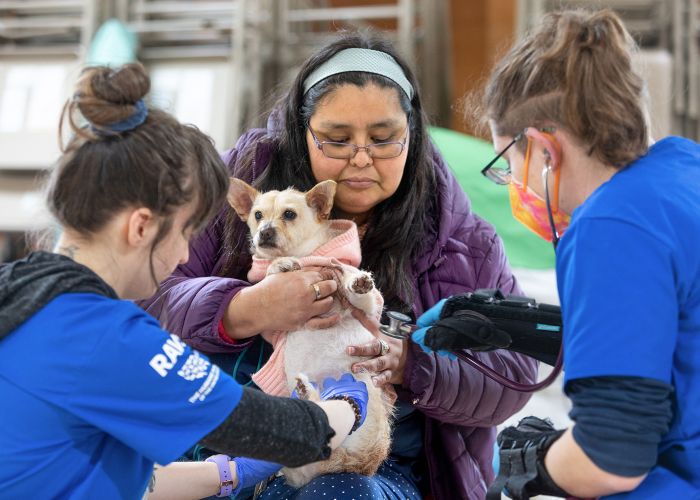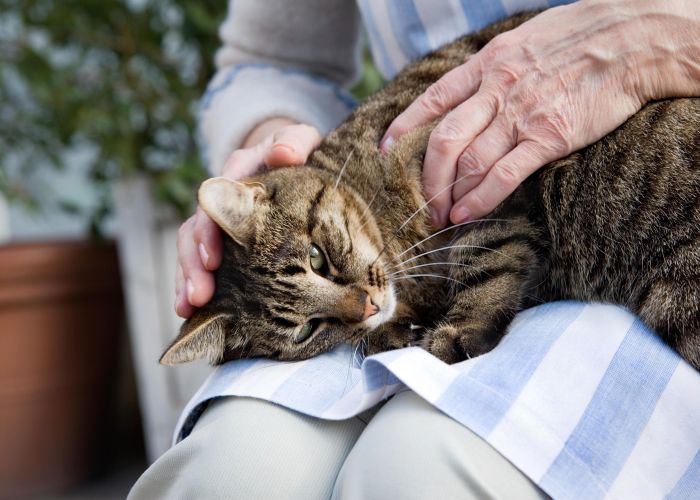Little card, big message
Shelters can turn kennel cards from a basic necessity into a marketing tool
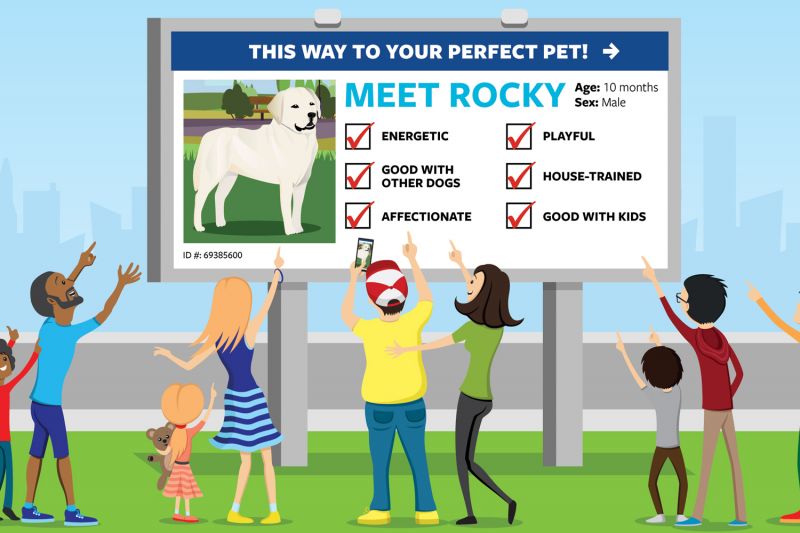
Roger loves to play with other small dogs. Senior calico Daisy is clicker-trained. Fifty-pound brindle-and-white Cookie has successfully completed training classes during her time at the shelter.
This information might seem run-of-the-mill to animal shelter staff. But when adopters see it on a kennel card—their written introduction to the animal—these might be the tidbits that make an animal stand out.
Unfortunately, many kennel cards still feature only basic information or internal shelter jargon that communicates to staff but may not say much of interest to the animal-browsing potential adopter.
This approach comes from kennel cards’ earlier function of simply identifying animals, says Kristen Hassen-Auerbach, director of Pima Animal Care Center in Tucson, Arizona. “These cards were started at a time when more than half the animals in a shelter may be at risk. So knowing that you had the right animal identified that matched the card really was life or death,” she says.
But the animal sheltering field has progressed, and although kennel cards should still provide the basics, they’re also an opportunity to showcase the animal on the other side of the door.
There’s no one right way to design and share information on kennel cards, and their look and content vary among organizations. But there are some basic ways shelters can ensure kennel cards serve as a positive introduction to an animal, make people want to know more and result in better matches.
“Kennel cards are really the bulletin board to talk about how amazing the animals in your care are, and to advertise them and to get them noticed among the many,” says Hassen-Auerbach.
“Kennel cards are really the bulletin board to talk about how amazing the animals in your care are, and to advertise them and to get them noticed among the many.”
—Kristen Hassen-Auerbach, Pima Animal Care Center
And because kennel cards are public-facing, they become part of an organization’s brand and impact how the public sees the group. The creative and fun descriptions on Arizona Humane Society’s kennel cards and online profiles draw people to the organization, says Jane Herrera, the Phoenix-based organization’s adoptions, rescue and retail manager.
“People really feel like we really care about each and every individual pet because we take the time to create a profile on them,” she says.
Think about the basics
Today’s kennel cards should still include factual, identifying information like name, gender and weight, intake date, ID number, a physical description, and the animal’s age. (Consider using a range or life stage, since you most likely don’t know the exact age, says Cameron Moore, who consults with shelters as part of her role as program manager for Million Cat Challenge.)
It’s also vital to prominently feature a good quality, color photo.
“I really cannot stress enough the importance of having a good photo of a pet,” says Herrera. You might think it’s unnecessary, since the animal is right there—but “kennels can be a really stressful environment where pets might not always be acting or feeling their best.”
In this case, a photo can help show an animal’s true personality, she adds.
But leave off a breed label, says Kim Wolf, founder and executive director of nonprofit Beyond Breed.
If you actually know the dog’s breed because you have pedigree papers or a DNA test, you can share that with adopters, she says. But research shows that guesses about dogs’ breeds are usually wrong, and studies also show that removing breed labels from kennel cards decreases length of stay, she says.
Shelters may feel like they have to give potential adopters breed information, but given that most breed labels are guesses, Wolf asks: “Why would you give them information that’s likely false?” Luckily, she adds, shelter software systems are changing so you can input a dog as a mixed or unknown breed.
When Athens-Clarke County Animal Control in Georgia removed breed labels in 2017, it led to more conversations with adopters about which animals would be a good fit for them without basing the decision on misconceptions about breed, says field services supervisor Michelle Carrigg.
“People really feel like we really care about each and every individual pet because we take the time to create a profile on them.”
—Jane Herrera, Arizona Humane Society
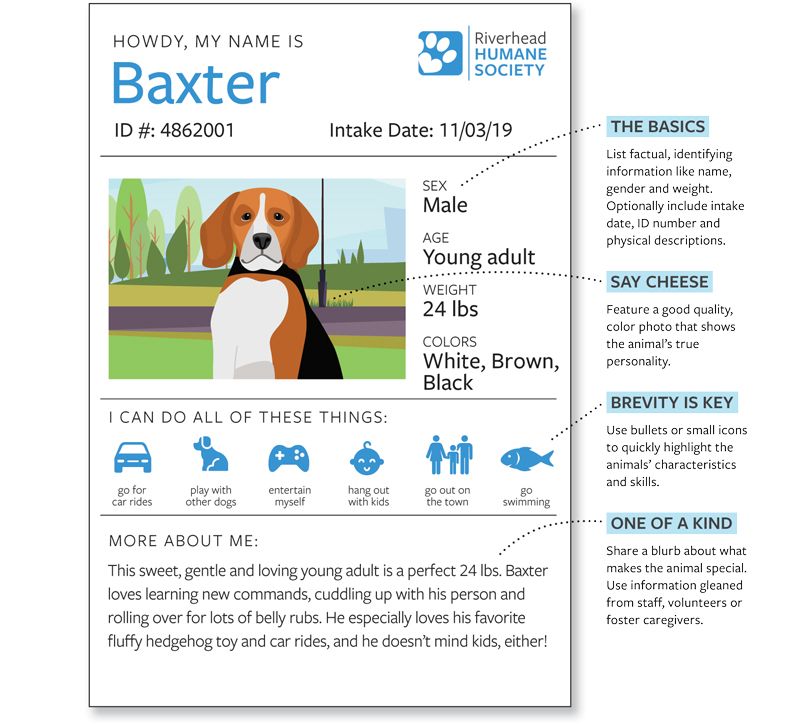
Highlight best qualities
Once you’ve got the basics down, make sure you’re sharing positive information about the animal’s personality—this is what will spark people’s interest.
“What people are looking for is, ‘What pet is going to fit best into my home and family?’” says Hassen-Auerbach.
It can be information staff, volunteers or foster caregivers have observed, or information from previous owners or shelters.
“This is the space to really talk about a pet’s unique qualities, the reasons why they would make a great addition to the family,” says Herrera.
The information doesn’t have to be groundbreaking to catch adopters’ attention or make them connect with the animal. It can simply note that a dog loves tennis balls or a cat enjoys being brushed, says Moore.
“One of the dogs I adopted, in his little description on his kennel card it said he loved playing with his toys, and something about that—I just melted,” says Wolf.
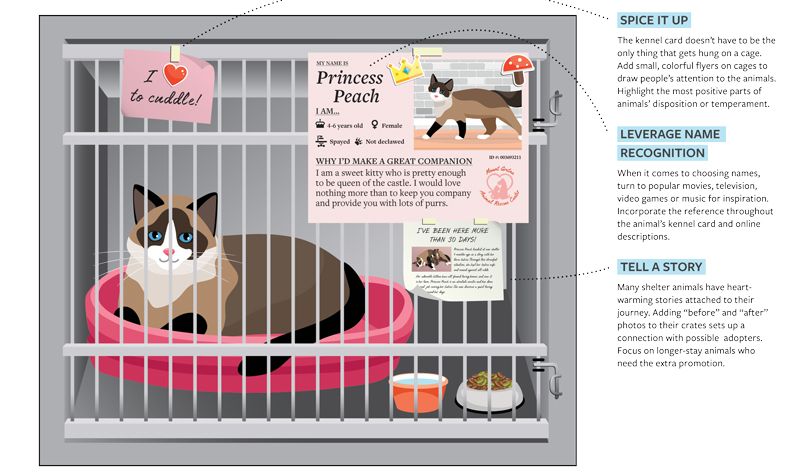
Avoid ‘stop sign’ language
Of course, while all animals have positive qualities, that doesn’t mean they don’t have their challenges, whether behavioral (maybe they’ve had negative experiences with other animals in the past) or medical (maybe they’re heartworm positive). But the kennel card isn’t the place to put that information.
“When I first got to PACC, you would walk through the kennel and it would say things like ‘no dogs,’ ‘no cats,’ ‘no chickens,’” says Hassen-Auerbach. “We would see so many stop signs on the kennel cards, and all that does is stop people from even considering the animal inside the cage.”
Excluding information from a kennel card isn’t about keeping it a secret. The kennel card is meant to spark a conversation, not replace one. Shelter staff can eventually share all the background information they have about an animal, including what they know about their behavioral or medical challenges, but kennel cards aren’t the place to convey nuance, and discussing an animal’s potential challenges in a conversation may save their life.
While an adopter may be turned off by a dog with a “no dogs” restriction on her cage card, staff may find that the adopter has the perfect canine match, making a restriction unnecessary and drastically reducing the time the shelter dog waits for a home.
“We tell adopters everything we know about the pets, but we do that during the adoption counseling when we can really give context to any known history we have,” says Hassen-Auerbach. “It’s never as simple as ‘no dogs,’ ‘no cats.’”
Lindsay Franušić, assistant manager of adoption programs at the Humane Society Silicon Valley in California, compares kennel cards to an online dating profile, where you just want to share “the best parts of yourself” to get people interested, she says.
Kennel cards serve the same role for the animal, possibly setting up a long-term connection with the adopter. After that initial interest, any less-than-ideal qualities might not seem like a barrier.
“We tell adopters everything we know about the pets, but we do that during the adoption counseling when we can really give context to any known history we have.”
—Kristen Hassen-Auerbach

Keep it short and sweet
While kennel cards should have more than just the basics, they should also be easy for people to quickly read while standing in front of a kennel, which means they shouldn’t include too much text.
AHS uses bullet points to describe animals’ personalities, says Herrera.
Other shelters include a brief sentence or two about the animals on the kennel card and supplement that information with small icons accompanied by a few words that highlight basic characteristics about the animal. The icons indicate an animal’s preferred activities: Bruno is a “couch potato,” Sasha likes car rides, Cheyenne does tricks.
The icons make it easy for adopters to find basic characteristics they’re looking for in a pet, and the public loves them, says Hassen-Auerbach.
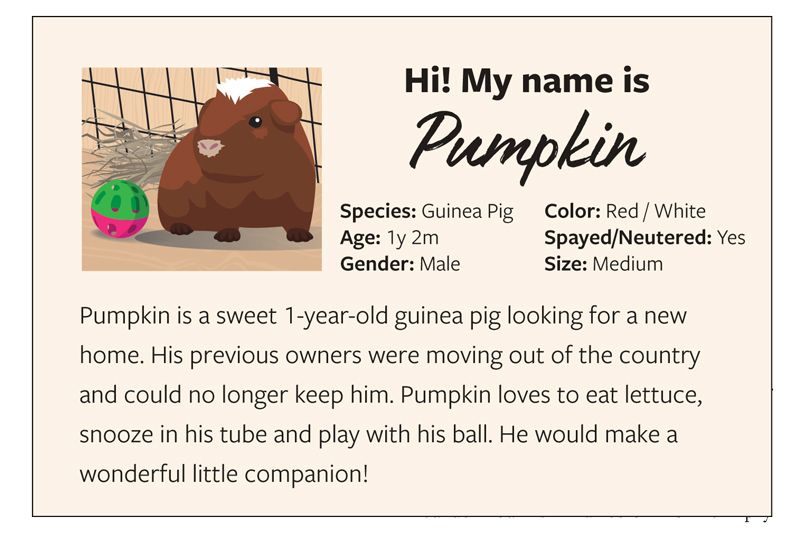
Accessorize creatively
The traditional kennel card doesn’t have to be the only thing that goes on a cage.
Hassen-Auerbach says that when she worked at Austin Animal Center in Texas, she used small, colorful flyers on cages to draw people’s attention to the animals. They said things like “Playgroup rock star” or “Been here for more than 30 days.”
“Our kennels there looked like a big, fun festival of pictures and images,” she says.
When animals arrive from a rescue operation, AHS sometimes features “before” and “after” photos to show the heartwarming transformations, says Herrera.
Herrera also recommends promoting animals with fun pop culture references. When AHS named a litter of kittens after Star Wars characters and incorporated movie references throughout their kennel card and online descriptions, an avid Star Wars fan noticed and adopted kitten Luke Skywalker.
Another system that Hassen-Auerbach used when she worked at Austin Animal Center was kennel report cards. These laminated cards hung on kennels in addition to the regular kennel cards. They listed basic skills, like knowing “sit” or “stay,” as well as sections about the animals’ favorite activities and personalities. Volunteers and staff updated the report cards as they worked with the animal, and the cards showed off the animals’ skills and personalities to potential adopters. Another benefit was that they gave volunteers a purpose—to work on a new skill or try a new activity—when they were with animals.
In general, for shelters that feel like they don’t have the time to focus on kennel cards, volunteers are a great resource for spicing them up. Hassen-Auerbach sometimes asks volunteers to take one good photo and write a blurb about what makes an animal special and sticks that on the kennel.
Plus, this effort doesn’t have to fall on one person. Get the team involved and have staff and volunteers bounce ideas off of each other, says Herrera.
HSSV recommends focusing on longer-stay animals who need the extra promotion.
However you do it, don’t be afraid to try new things, says Hassen-Auerbach.
“Try something, see if it works, but pay attention to the metrics around it. Is it reducing length of stay? Is it making better matches between pets and people? Ask people if they feel like it’s helpful,” she says. “We’ve tweaked ours so many times and continue to, based on what is working in the organization.”


